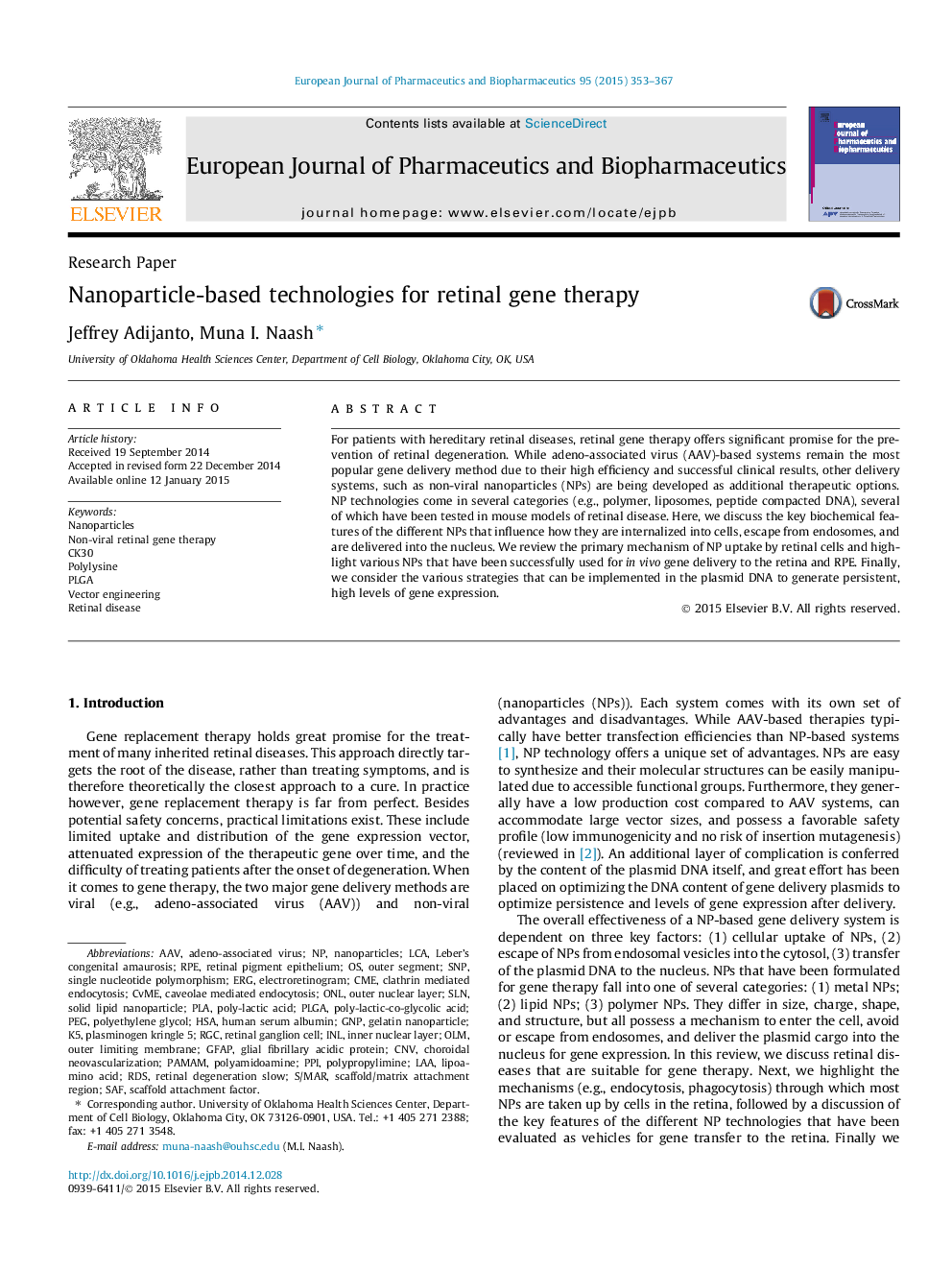| Article ID | Journal | Published Year | Pages | File Type |
|---|---|---|---|---|
| 2083296 | European Journal of Pharmaceutics and Biopharmaceutics | 2015 | 15 Pages |
•Monogenic retinal diseases are great targets for genetic therapies.•Viral and non-viral (nanoparticle) approaches have been tested.•Various types of nanoparticles have been tested successfully in the eye.•The retinal pigment epithelium is the easiest retinal cell type to transfect.•Some nanoparticles such as CK30-PEG also transfect photoreceptors.
For patients with hereditary retinal diseases, retinal gene therapy offers significant promise for the prevention of retinal degeneration. While adeno-associated virus (AAV)-based systems remain the most popular gene delivery method due to their high efficiency and successful clinical results, other delivery systems, such as non-viral nanoparticles (NPs) are being developed as additional therapeutic options. NP technologies come in several categories (e.g., polymer, liposomes, peptide compacted DNA), several of which have been tested in mouse models of retinal disease. Here, we discuss the key biochemical features of the different NPs that influence how they are internalized into cells, escape from endosomes, and are delivered into the nucleus. We review the primary mechanism of NP uptake by retinal cells and highlight various NPs that have been successfully used for in vivo gene delivery to the retina and RPE. Finally, we consider the various strategies that can be implemented in the plasmid DNA to generate persistent, high levels of gene expression.
Graphical abstractFigure optionsDownload full-size imageDownload high-quality image (272 K)Download as PowerPoint slide
